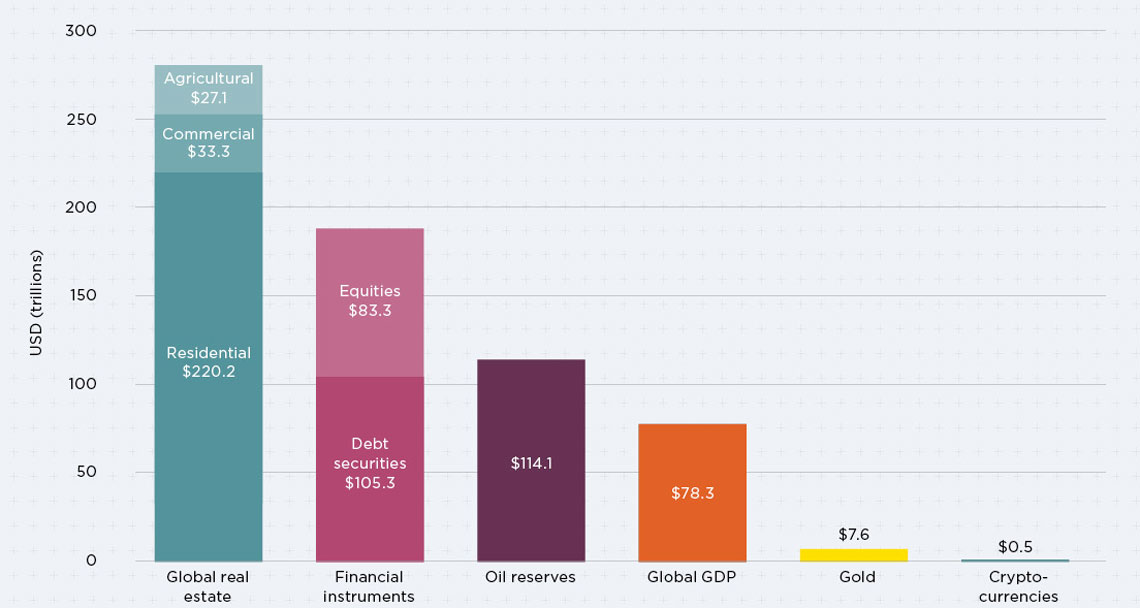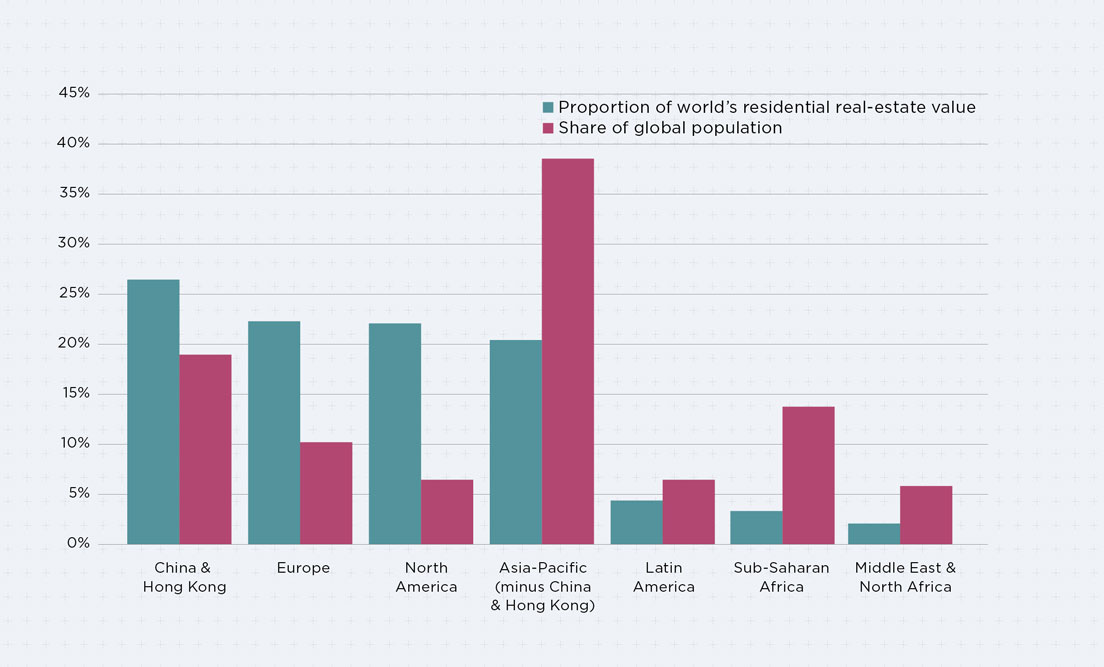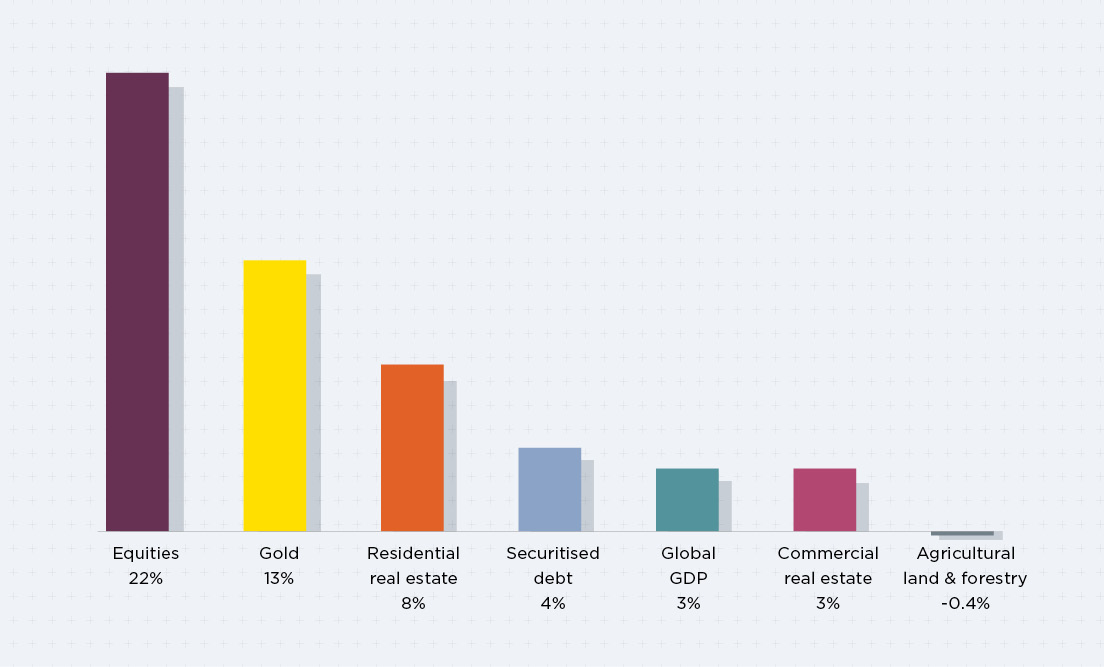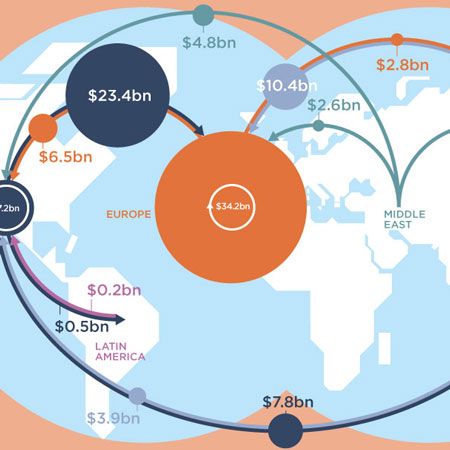1. At the end of 2017, the value of the world’s real estate reached US$280.6 trillion, the highest figure we’ve ever recorded and an annual increase of 6.2%. Residential real estate accounted for the largest share ($US220.6 trillion) of that huge figure, with commercial real estate (US$33.3 trillion) and agricultural and forestry real estate ($US27.1 trillion) making up the rest.
2. By any measure, real estate is by far the most significant store of wealth, representing more than 3.5 times the total global GDP.
Global real estate universe in comparison

Source: Savills World Research
3. Most residential real-estate value is contained in the mature markets of North America and Europe, with more than 44% of value belonging to just 17% of the global population.
Global distribution of real estate value versus population

Source: Savills World Research
4. China now accounts for the largest share of global residential value, thanks to national house price growth (up 16%) and a rapid programme of housebuilding. Emerging markets, especially in Asia, are also experiencing fast growth.
5. The share of commercial real estate by world region is more closely related to GDP share than it is to population size.
6. The top five most valuable national commercial real-estate markets (excluding residential) are:
US: US$8.1 trillion
China: US$3.6 trillion
Japan: US$2.8 trillion
Germany: US$1.7 trillion
UK: US$1.7 trillion
7. Pressure on commodity prices has slowed value growth – down 0.4% on an annual basis to US$27.1 trillion. However, an increasing world population, food production (coupled with reduction in food waste) and competitive land uses will sustain values.
8. Equities and gold grew much faster in value than real estate, but rising wealth in emerging economies means there is more capital at large, and real estate is viewed as a safe store for it. Investor motives remain a mixture of wealth storage, capital appreciation and income return. But, increasingly, the income produced by real-estate assets and the potential for rental growth is of increasing interest to investors as the yields on fixed-income assets have compressed.
Value growth in 2017

Source: Savills World Research



